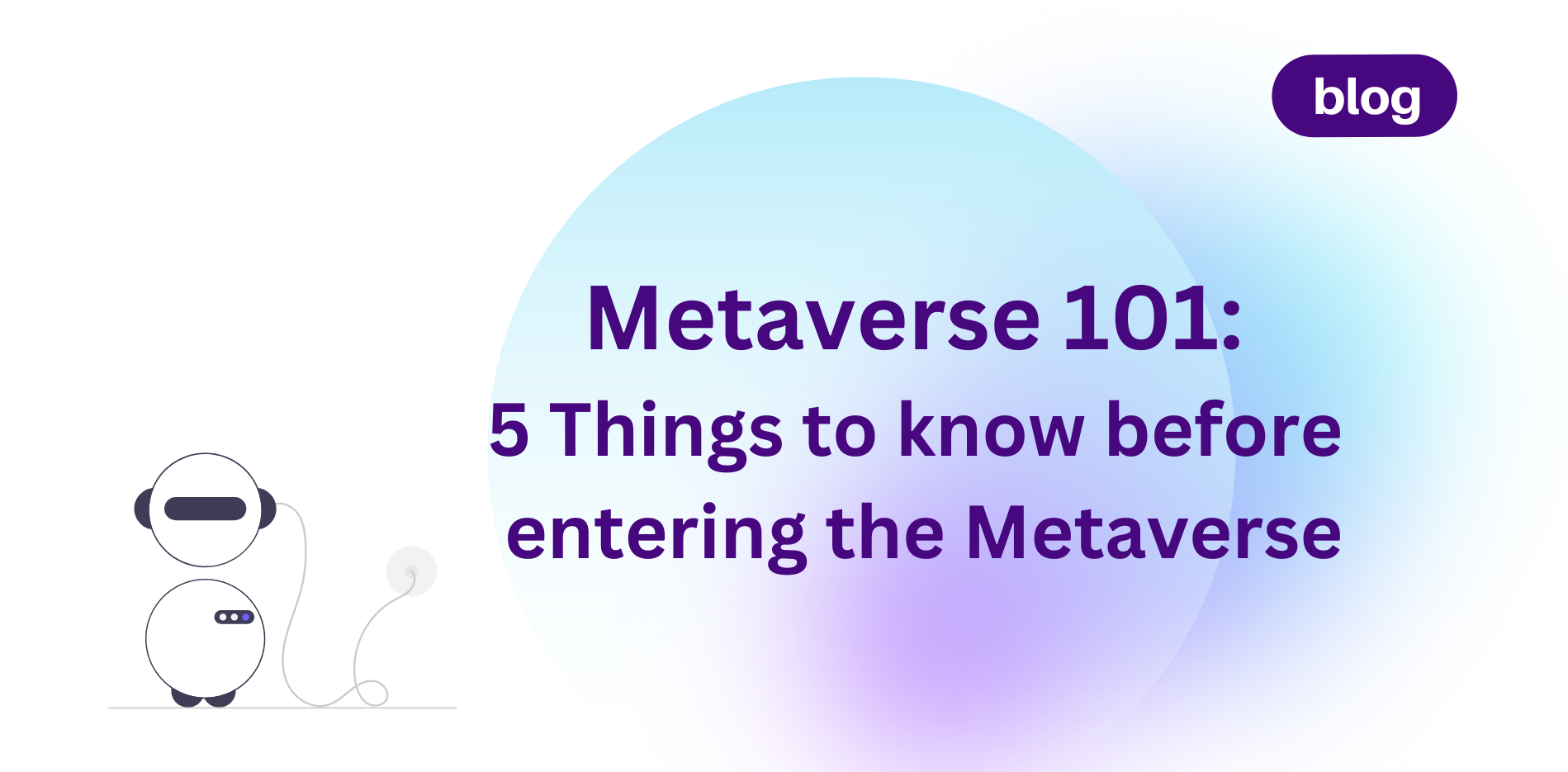Metaverse 101: 5 Things to know before entering the Metaverse (暫時只提供英文版本)
Author: LazyKar (Repost)
The metaverse is a stimulation of a 3D environment that mimics the physical world. It provides an immersive experience, in which we can interact with people and participate in activities such as game playing, buying and selling land, attending concerts and events, and more. It is also filled with marketing opportunities for stage campaigns without the restriction by the laws of physics and creates a new and more interactive experience for our customers.
Covid’s impact best illustrates how such limitations can affect worldwide businesses. Here are a few things you need to know before immersing yourself in the metaverse.
1. Digital Avatars
In the metaverse where physical presence no longer exists, digital avatars are instead used to replace everything we do with our physical presence. We can create and personalise digital avatars to express emotions and feelings. The avatar is our digital identity providing freedom to interact socially with fewer limitations of gender, race, and location. Similar to the physical world, we can take selfies with other avatars.
In addition, the metaverse provides us an immersive experience where our avatar can move from one virtual location to another virtual location seamlessly. With the full body-tracking capabilities of VR, we can telegraph real-world physical activities and get physically active with one another.
2. User Experience in the Metaverse
Metaverse provides a good user experience to our audience, especially for its immersive experience where no previous web environment could provide. For example, reading a post on Linkedin via your monitor vs having my 3D avatar to “stand” in front of you to talk about the metaverse with 3D animations.
🔸Richer Experience
Metaverse offers a richer experience. With a Virtual Reality headset, we can enjoy an immersive experience. Augmented Reality also plays a pivotal role in providing additional information by overlaying and bridging the gap between the physical and virtual worlds, and to a much larger audience group anytime anywhere.
🔸Seamless Experience
In the metaverse, we can seamlessly move from any location to another location without having to be physically there. In addition, we can create a virtual space of our own and invite friends to come. We can even invite our friends to a concert or party anywhere in the world. There is no restriction by the laws of physics.
3. Community-driven & Collaborative
Similar to social media, the metaverse is a community-driven platform. However, it is not just a place to generate content; but also a creator-driven platform that enables non-technical visitors to create content and shape the metaverse with their creativity.
As metaverse is a heavily creator-driven platform, when we interact with fellow users, we are not just talking to a single user but to the user and their community. Thus, we should encourage user-generated content rather than continually creating content ourselves. To attract users to create their new forms of content, we can create an environment and technical support for them. For example, Nike provides a tool kit for creators to design their mini-games easily in the Nikeland in Roblox.
4. Real-time and Always Active
The metaverse will be a parallel reality in a 24/7, real-time, and never-stop interaction. In the metaverse, agile and real-time reactions are essential.
Although direct communication can help enhance users’ experience, relationship-driven 24/7 marketing is a challenge for companies that are not good at reacting in real-time. In addition, companies may need to hire community managers for an always active metaverse to answer users’ inquiries.
5. Virtual Economy
The metaverses use blockchain technology to build a decentralized world and a virtual economy that allow users to buy digital assets, such as lands, avatars, apparel, and mansions. Non-fungible token (NFT), one of the emerging technologies in the web3 community, is one of the push factors for the metaverse.
As a new type of virtual asset, NFTs can be used in infinite ways. We can collect NFTs, make money via play-to-earn games, or trade NFTs in marketplaces. For example, the Gucci Garden allows people to collect limited Gucci items in the metaverse. To increase stickiness, brands can airdrop special NFT to loyal members or long-time use of the service for a loyalty program.
Final Thoughts
There is plenty of room for innovations and experiments in the metaverse. Since the metaverse has not yet existed, we cannot find any best practices or guidebooks. Yet, the young generation grows up in proto-metaverse games.
As digital marketers, we should have a digital-forward and user-centric mindset to build a long-term relationship with them through a persistent presence on the metaverse rather than one-time promotion. Also, we cannot just create digital copies but rethink the strategies in a shared virtual space.

